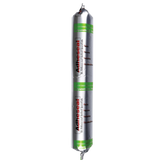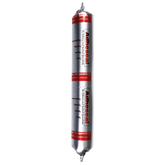Leather: Your guide to understanding adhesion with Leather products
Leather, a timeless and versatile material, finds its applications across various industries, from fashion to automotive manufacturing. In the Australian trades industry, understanding the interaction between leather and adhesives such as Polyurethanes, MS, Hybrid, Silicones, Epoxies, and Resins is crucial. This blog aims to shed light on the nature of leather, its bonding with these adhesives, common applications, challenges, and performance under unique Australian environmental conditions.
Interaction with Adhesives
- Polyurethanes: Flexible and robust, suitable for bonding leather in footwear (e.g., hiking boots) and furniture (e.g., luxury sofas).
- MS: Provides strong bonds with leather, commonly used in automotive interiors for high-end vehicles.
- Hybrid: A versatile option, used in fashion accessories like handbags and belts.
- Silicones: Popular in outdoor leather gear, used for waterproofing while retaining flexibility.
- Epoxies: Offers rigid bonds, ideal for structural leather applications in architecture.
- Resins: Common in crafting and artistic leather works, such as decorative panels in hospitality settings.
Factors Influencing Adhesion
Leather Type: Full-grain leather requires different adhesives compared to bonded leather, influencing choices in fashion vs. commercial upholstery.
Surface Treatment: Pre-treatment in automotive leather interiors can significantly affect the longevity and appearance of the bond.
Adhesive Formulation: Specific formulations for high-flexibility needs are vital in sports equipment like leather-bound cricket balls.
Scientific Analysis of Leather
Composition and Structure
Leather is primarily composed of collagen fibers, interwoven to create a complex structure. The way these fibers are tanned and treated affects their interaction with adhesives like Polyurethanes, MS, Hybrid, Silicones, Epoxies, and Resins.
Interaction with Adhesives
- Polyurethanes: Flexible and robust, suitable for bonding leather in footwear and furniture.
- MS: Provides strong bonds with leather, used in automotive interiors.
- Hybrid: A versatile option for various leather applications, including fashion accessories.
- Silicones: Used for waterproofing leather products, retaining flexibility.
- Epoxies: Offers rigid bonds, ideal for structural leather applications.
- Resins: Common in crafting and artistic leather works, providing clear and aesthetic finishes.
Factors Influencing Adhesion
Leather Type: Full-grain, top-grain, and bonded leather have different adhesive requirements.
Surface Treatment: Pre-treatment like cleaning and priming affects adhesive performance.
Adhesive Formulation: Specific formulations cater to unique leather applications, such as high-flexibility needs.
Common Applications and Usage
Fashion and Apparel
Leather is a staple in the fashion industry. Adhesives like Polyurethanes and Hybrids provide the flexibility and strength needed for items like jackets, handbags, and belts.
Automotive Interiors
Leather's luxurious feel makes it a common choice for vehicle interiors. MS adhesives are widely used for bonding leather components, ensuring durability and a premium appearance.
Furniture and Upholstery
In furniture, leather offers both comfort and aesthetics. Epoxies and Resins are often used for structural bonding, while Polyurethanes provide flexible joints.
Outdoor Gear
For outdoor leather equipment like hiking boots, Silicones offer waterproofing and flexibility, ensuring performance under various weather conditions.
Sports Equipment
Leather is used in sports equipment like cricket balls and gloves. Specialized adhesive formulations are required to withstand the wear and tear of intense activities.
Challenges and Considerations
Selection of Appropriate Adhesive
- Compatibility: Choosing the right adhesive for specific leather types (e.g., full-grain vs. bonded leather) is critical to achieving desired performance and aesthetics.
- Industry Standards: Complying with Australian standards and regulations ensures safety and quality, particularly in automotive and construction applications.
- Environmental Impact: Consideration of eco-friendly adhesives aligns with sustainability goals, essential in the modern Australian market.
Environmental Considerations
- Australian Climate: Adhesives must withstand extreme temperatures, UV exposure, and coastal conditions prevalent in Australia.
- Water Resistance: In areas exposed to rain and humidity, water-resistant adhesives like Silicones are vital, especially in outdoor gear and marine applications.
- Chemical Exposure: In industrial settings, adhesives must resist chemicals, oils, and other harsh substances, affecting the choice of Epoxies and Resins.
Application Challenges
- Surface Preparation: Proper cleaning, priming, and conditioning of leather surfaces ensure optimal adhesion, affecting longevity and appearance.
- Curing Time: Consideration of curing time is essential for mass production, such as in automotive manufacturing or large-scale furniture production.
- Aesthetic Considerations: Achieving a refined finish without visible adhesive lines is a challenge in luxury goods and high-end interiors.
External Considerations
Australian Climate
- Heat and Sunlight: Leather's interaction with adhesives like Polyurethanes can be affected by Australia's intense heat and UV radiation, requiring UV-resistant formulations in outdoor applications like furniture and automotive interiors.
- Coastal Conditions: In coastal areas, salt and humidity can impact the bonding quality, making Silicones a preferred choice for marine and coastal applications like boat seats and outdoor gear.
Weather and UV
- Rain and Humidity: Leather used in outdoor applications, such as hiking boots, requires water-resistant adhesives like Hybrids to ensure longevity.
- UV Stability: UV-resistant Epoxies are often used in automotive interiors to prevent degradation and discoloration due to prolonged sun exposure.
Movement
- Flexibility Requirements: Leather's natural flexibility demands adhesives that can stretch and flex, such as MS adhesives in fashion accessories like handbags.
- Vibration Resistance: In automotive applications, vibration-resistant adhesives like Resins are essential to maintain bond integrity in leather components.
Temperatures
- Extreme Heat: Heat-resistant adhesives like Silicones are vital in applications like automotive interiors, where temperatures can soar during the Australian summer.
- Cold Resistance: Leather products exposed to cold, such as motorcycle gloves, require adhesives like Epoxies that retain their properties at low temperatures.
Areas Exposed to Moisture, Sea Salt, Humidity, etc.
- Marine Environments: Leather used in yachts or marine upholstery requires adhesives like Polyurethanes that resist saltwater and moisture.
- Swimming Pool Surrounds: Leather finishes around pools may require Hybrid adhesives that resist chlorine and constant moisture exposure.
Key Takeaways
- Adhesive Selection: Understanding the specific leather type and choosing the right adhesive, such as Polyurethanes, MS, Hybrid, Silicones, Epoxies, or Resins, is crucial for optimal performance.
- Environmental Factors: Adhesives must be selected based on Australia's unique climate, including considerations for UV resistance, moisture, sea salt, and extreme temperatures.
- Application Challenges: Proper surface preparation, curing time considerations, and aesthetic requirements demand careful planning and execution.
- Industry-Specific Solutions: Tailoring adhesive solutions to specific industries, such as automotive, marine, and fashion, ensures quality, durability, and compliance with Australian standards.




